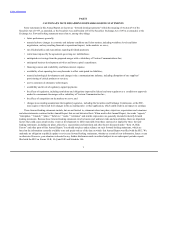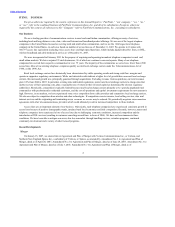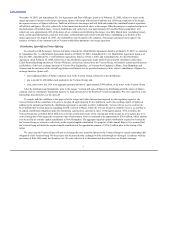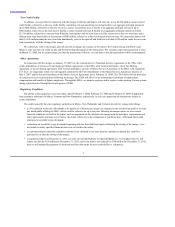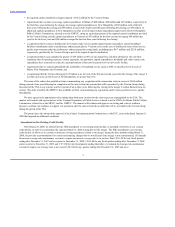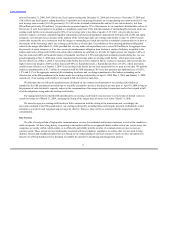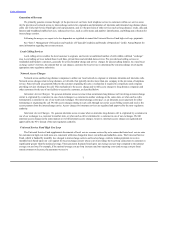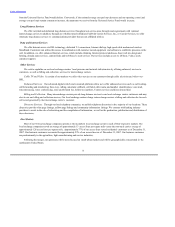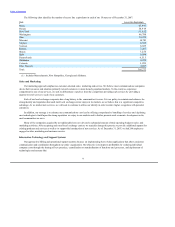FairPoint Communications 2007 Annual Report Download - page 13
Download and view the complete annual report
Please find page 13 of the 2007 FairPoint Communications annual report below. You can navigate through the pages in the report by either clicking on the pages listed below, or by using the keyword search tool below to find specific information within the annual report.
Table of Contents
Although Verizon could compete with us in the offering of long distance services to residences and small businesses, Verizon does
not presently actively market the sale of these services to residences and small businesses in Maine, New Hampshire and Vermont, other
than through the current local exchange business and related landline activities in Maine, New Hampshire and Vermont as historically
operated by the Verizon Group, or the Northern New England business. In addition, if we enter into an agreement with Verizon or another
wireless services provider to be a mobile virtual network operator, or MVNO, we will compete with Verizon to provide wireless services in
those areas where the Northern New England business and Cellco Partnership doing business as Verizon Wireless currently operate.
In most of our rural markets we face competition from wireless technology and, as technology and economies of scale improve,
competition from wireless carriers may increase. In addition, the FCC’s requirement that telephone companies offer wireline-to-wireless
number portability may increase the competition we face from wireless carriers.
We also face competition from new market entrants that provide close substitutes for the traditional telephone services we provide,
such as cable television, satellite communications and electric utility companies. Cable television companies are entering the
communications market by upgrading their networks with fiber optics and installing facilities to provide fully interactive transmission of
broadband, voice, video and data communications. Electric utilities have existing assets and access to low cost capital that could allow
them to enter a market rapidly and accelerate network development. While we currently have limited competition for voice services from
cable providers and electric utilities for basic voice services, we may face increased competition from such providers in the future.
In addition, we have and could continue to face increased competition from competitive local exchange carriers, particularly in
offering services to Internet service providers.
Voice over internet protocol, or VoIP, service is increasingly being embraced by all industry participants. VoIP service essentially
involves the routing of voice calls, at least in part, over the Internet through packets of data instead of transmitting the calls over the
existing public switched telephone network. This routing mechanism may give VoIP service providers a cost advantage and enable them to
offer services to end users at a lower price. While current VoIP applications typically complete calls using incumbent local exchange
carrier infrastructure and networks, as VoIP services obtain acceptance and market penetration and technology advances further, a greater
quantity of communication may be placed without utilizing the public switched telephone network. The proliferation of VoIP, particularly
to the extent such communications do not utilize our rural local exchange carriers’ networks, may result in an erosion of our customer
base and loss of access fees and other funding.
The Internet services market is also highly competitive, and we expect that competition will continue to intensify. Internet services,
meaning both Internet access (wired and wireless) and on-line content services, are provided by Internet service providers, satellite-based
companies, long distance carriers and cable television companies. Many of these companies provide direct access to the Internet and a
variety of supporting services to businesses and individuals. In addition, many of these companies, such as America Online, Inc.,
Microsoft Network and Yahoo, offer on-line content services consisting of access to closed, proprietary information networks. Long
distance companies and cable television operators, among others, are aggressively entering the Internet access markets. Long distance
carriers have substantial transmission capabilities, traditionally carry data to large numbers of customers and have an established billing
system infrastructure that permits them to add new services. Satellite companies are offering broadband access to the Internet from
desktop personal
11


